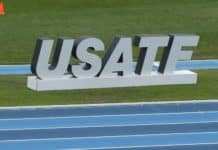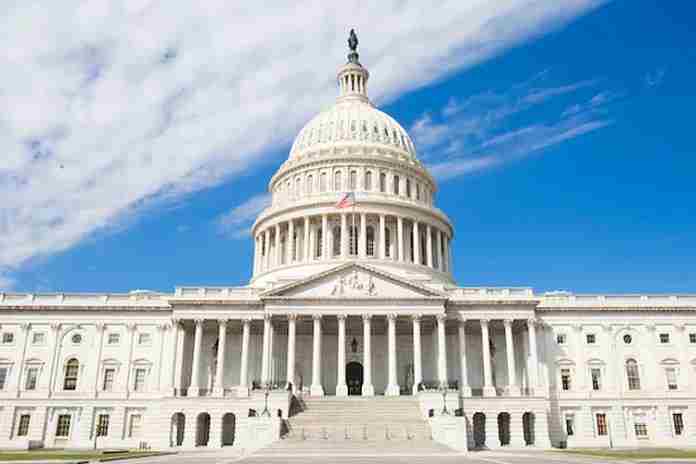The introduction of a bill by U.S. Senator Cory Gardner (R-Colorado) on Wednesday is the first step on what could be a fairly rapid process – in government terms – to review the current status of the United States Olympic Committee.
Brought into disrepute by its slow and uncertain reaction to sexual abuse in multiple sports, but most recently the Larry Nassar abuse scandal in women’s gymnastics, the USOC now has the U.S. Congress looking at what should be done.
Gardner’s bill is brand new and is likely to be changed before it gets anywhere; there is no companion bill in the Democrat-controlled House of Representatives.
But the bill is specific about what is to be done. A 16-member working group to be called the “Commission on the State of U.S. Olympics and Paralympics” is to be formed, with an Executive Director and staff, to perform a nine-month review of the USOC and consider 10 distinct matters.
Let’s walk through the first five now and project what might turn up:
● (1) “A description of proposed reforms to the structure of the United States Olympic Committee”
The first item to be studied is the last one that will be determined. The USOC’s detractors will call for it to be disbanded and a new group formed, but this is unlikely. Formed in 1894, the USOC received a Federal Charter in 1950 and even as a holding company for the National Governing Bodies, it performs its functions in a way that is unique to almost every other Federal entity: it receives no governmental financial support.
In fact, the USOC is the only National Olympic Committee in the world which is not, essentially, a government agency as far as funding goes. And the U.S. is one of the few countries which does not have a sports ministry.
The landmark Amateur Sports Act of 1978 (now the Ted Stevens Olympic and Amateur Sports Act) was created to solve the unrelenting tug-of-war over athlete participation and athlete rights between the National Collegiate Athletic Association (NCAA) and the Amateur Athletic Union (AAU), which oversaw many Olympic sports in the U.S. It achieved that, but as pointed out by USOC Athletes’ Advisory Council chair Han Xiao in hearings last year, also created an “unregulated monopoly” over the U.S. Olympic Movement.
Mike Harrigan, who led the President’s Commission on Olympic Sports (1975-77) that conceived the Act, wrote convincingly in an August editorial in the Sports Business Journal that “There is no need to amend the Act, only the need to understand it and enforce it with congressional oversight conducted regularly.”
And that is the likely outcome of the Commission: to suggest the formation of a permanent commission of the Congress to oversee the USOC and try to ensure its adherence to the requirements of the Act. There are many such bodies, the best-known of which might be the Commission on Security and Cooperation in Europe,” a.k.a. the U.S. Helsinki Commission. It was formed in 1976 to monitor compliance with the Helsinki Accords, a politically-binding agreement that contains a broad range of measures designed to enhance security and cooperation in the region, especially in the area of human rights. It has a permanent office on Capitol Hill and a full-time staff of 15.
Look for something smaller to come out of this review, but as the government’s natural reaction to any crisis is to grow larger to control it, a new Federal commission has to be a favored outcome.
● (2) “An assessment of whether the board of the United States Olympic Committee includes diverse members, including athletes”
The USOC’s Board currently includes 15 members at present: eight men and seven women, two of whom are African-American and one Asian-American. The Board members affiliated with the Athletes’ Advisory Council are Steve Mesler (bobsled), Whitney Ping (table tennis) and para-swimmer Brad Snyder. However, there are three other current or former athletes on the USOC Board, including U.S. members of the International Olympic Committee Anita DeFrantz (rowing) and Kikkan Randall (cross country skiing) and Cheri Blauwet (para-athletics).
So the athlete count is actually six of 15 members at present (40%).
As to the male-female ratio, the current USOC Board is pretty diverse. But there will certainly be scrutiny over the number of minority members of the Board and the number of “athletes” – however defined – who must be members. And look for the minimum percentage of “athletes” on the Board and all committees to be raised from the current 20% or 33%, 40% or perhaps even 50%.
It will be a fascinating aspect of this review point to see if any attention is paid in the review of the needs for specific competence or professional experience and skills of the directors vs. their being from a specific group.
● (3) “An assessment of United States athlete participation levels in the Olympics and Paralympics”
This should be a high point for the USOC, as it sends the largest teams of any country to the Olympic and Winter Games. In the recent Games:
- 2016 Olympic Games: The American team for Rio 2016 numbered 554, by far the largest delegation, with Germany second at 425.
- 2018 Winter Games: The U.S. sent 241, well ahead of second-place Olympic Athletes from Russia (168).
- 2016 Paralympic Games: The American squad for Rio was 279, second only to host Brazil’s 285.
- 2016 Winter Paralympics: The U.S. had 68 competitors, far more than the second-largest delegation from Japan (38).
It’s worth pointing out that the U.S. sends many athletes to compete in the Games who have no chance at a medal whatsoever, but who meet the criteria for qualification. Let’s see if the USOC gets credit for that.
● (4) “A description of the status of any United States Olympic Committee licensing arrangement”
This will be interesting, if only to find out what oddball arrangements the USOC has. One example sure to be surfaced is the “Official USOC Training Site” designation given to the Karolyi Ranch in Texas, at which athletes were abused by Nassar.
This review will also point up the value of the Congressional designation of the word “Olympic” as being solely reversed for commercial use by the USOC. Without that protection, the USOC’s revenues would shrink substantially … and all those folks who go to the Games without a shot at a medal might not get to go in the future.
● (5) “An assessment of whether the United States is achieving the goals for the Olympics and Paralympics set by the United States Olympic Committee”
This review item is almost certain to be changed. The U.S. is certainly achieving the goals that the USOC is setting for it, but that’s not what needs to be reviewed. The question is whether the USOC is fulfilling the requirements set forth by the Congress according to the Act (36 United States Code sec. 220501 et seq.).
Harrigan, in his Sports Business Journal comment, noted that “The Act makes it clear that Olympic Committee objectives are also to focus on other aspects of sport, including grassroots and intermediate development. A greater concern for issues other than just winning Olympic medals would probably have prevented the lack of prompt action on sex abuse incidents.”
The Act specifically requires the USOC to promote physical fitness and participation in sports, sports safety and sports research, and, as added in 2018, “promote a safe environment in sports that is free from abuse, including emotional, physical, and sexual abuse, of any amateur athlete.”
One element of the current Act which does need to be changed is to recast the characterization of athletes as “amateurs.” Many Olympic athletes today – certainly not all – are full-time professionals and are paid appearance fees, prize money, training stipends and many have commercial sponsors or affiliations which the U.S. Internal Revenue Service is quite interested in. So that aspect of the Act needs to be revised.
We’ll examine the remaining five elements required for Commission review on Monday.
Rich Perelman
Editor
















